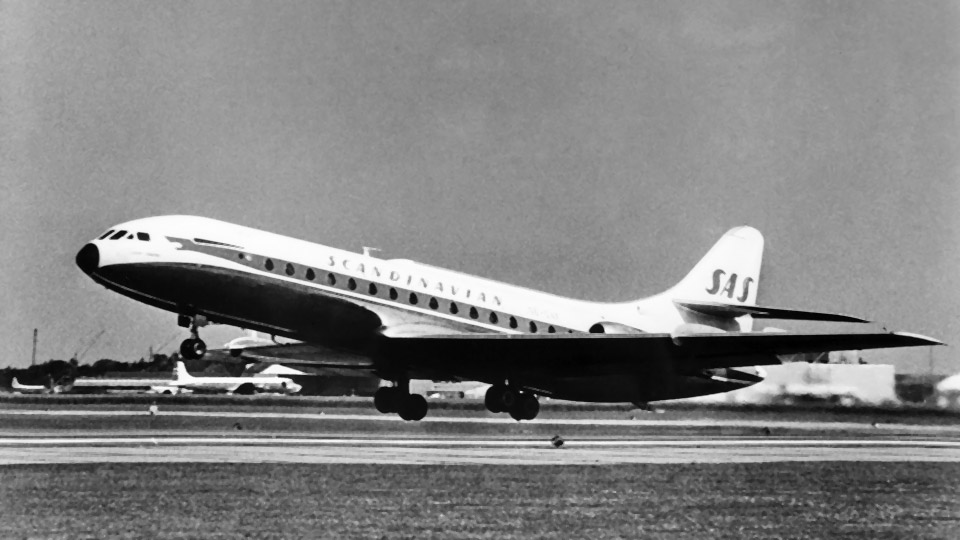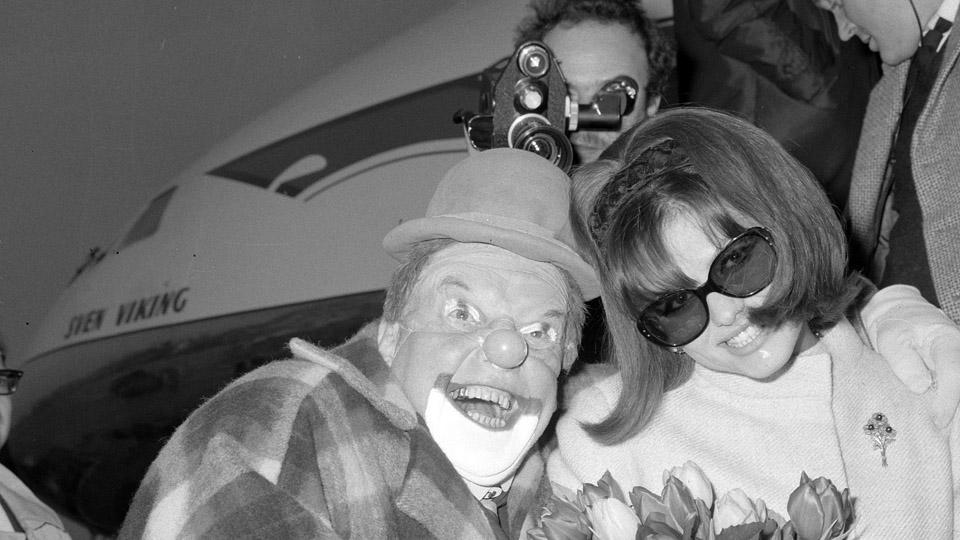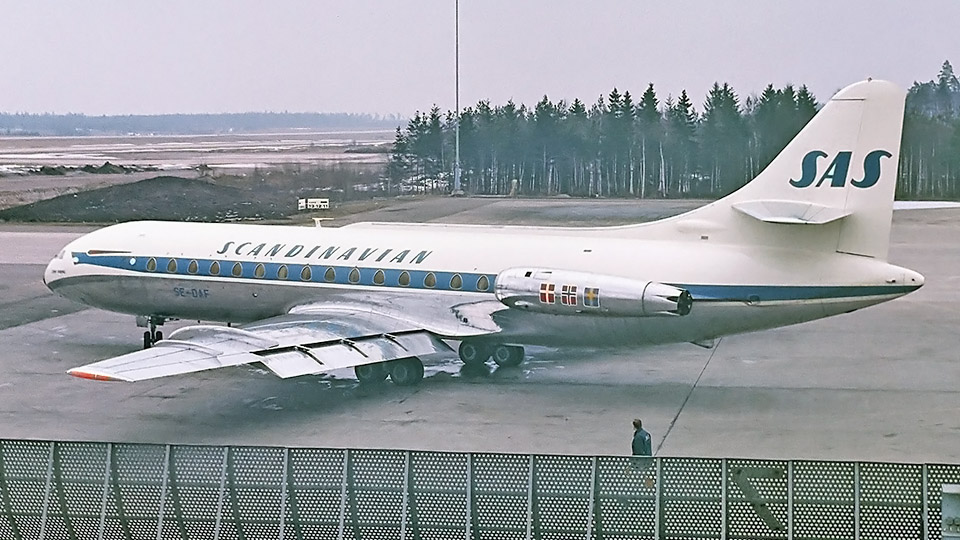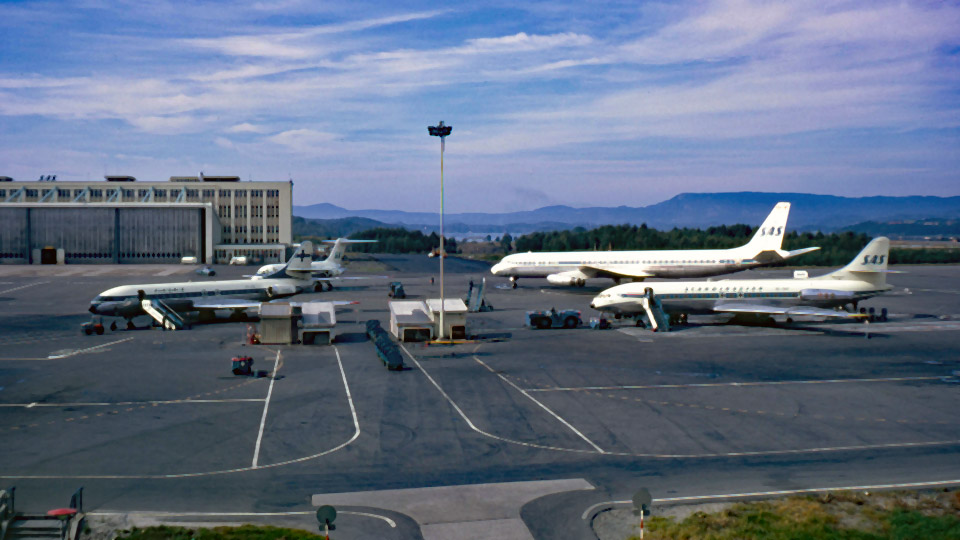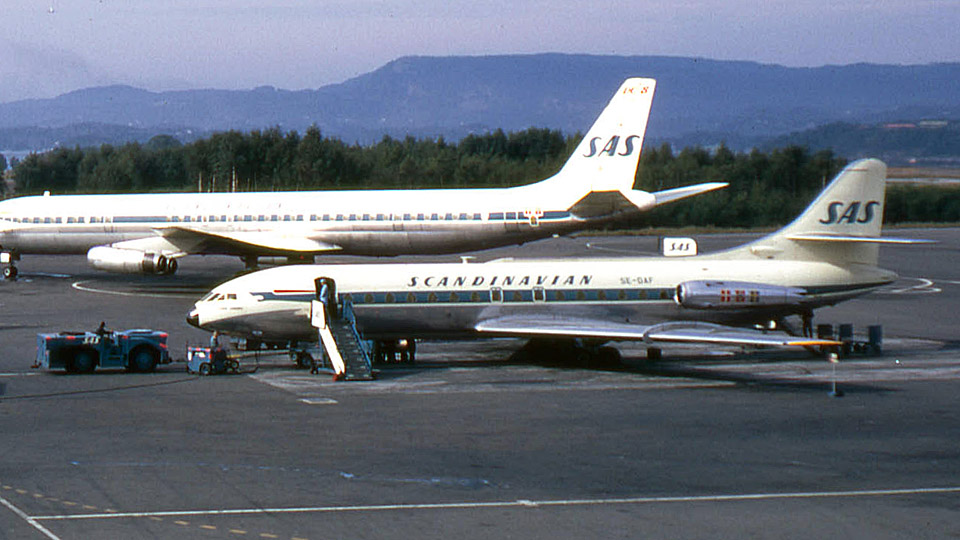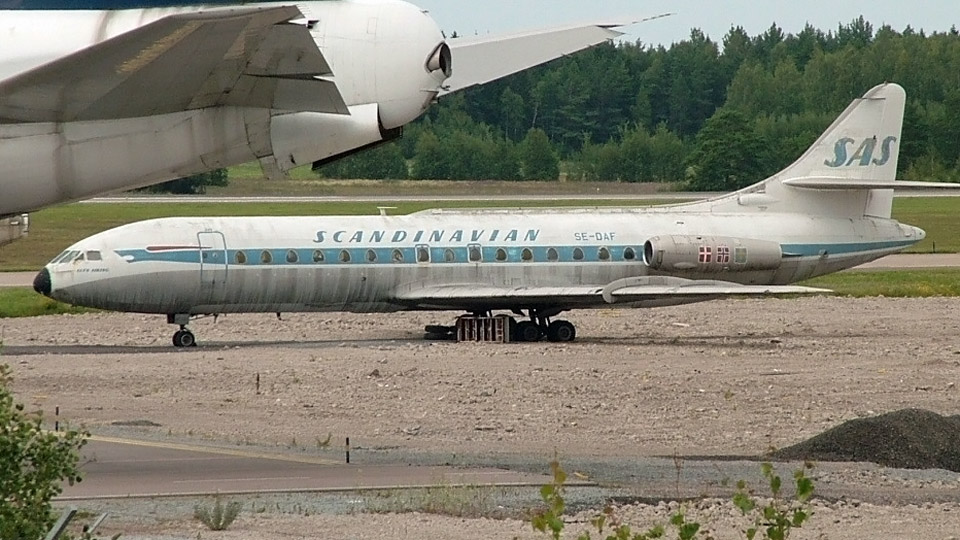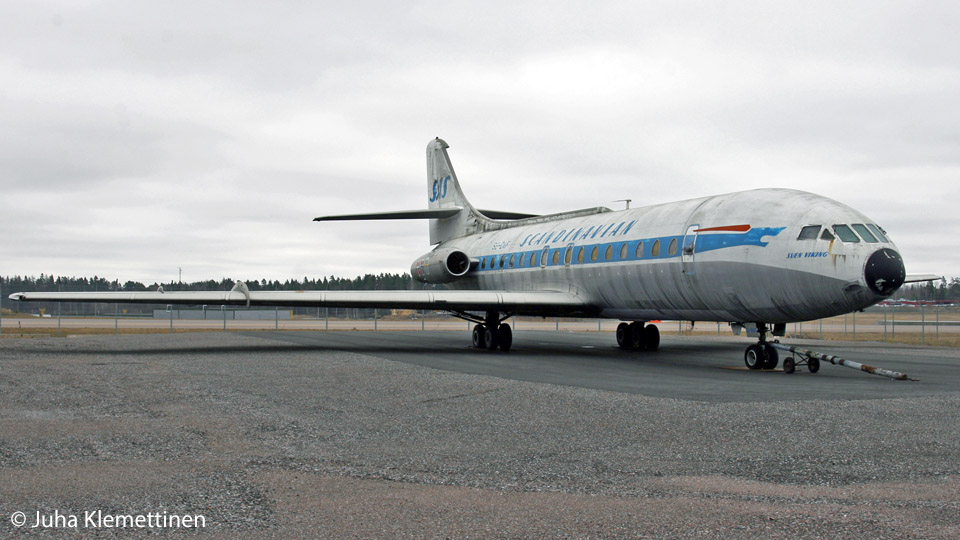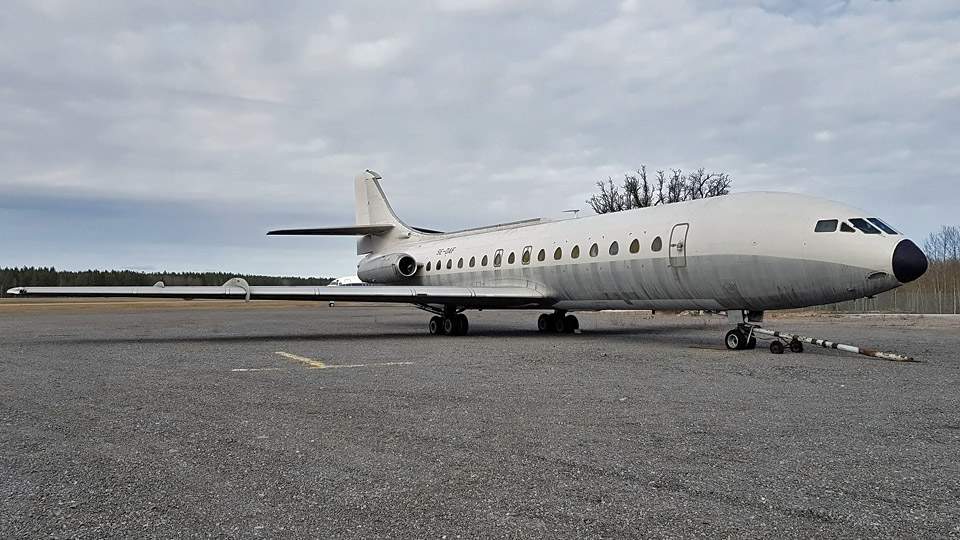Caravelle SE-DAFSunnuntai 19.3.2023 - Jan Forsgren These blogs talk about the Sud Aviation Caravellle III SE-DAF. We think it is appropriate to tell something about what has happened to the SE-DAF before it arrived in Pansio to be restored. The original article “SE-DAF to Finland” about SE-DAF was written in English by Jan Forsgren / Arlanda Flygsamlingars Vänner, the summary has been edited by Erja Reinikainen. The whole article was published in Aviation Museum Society Finland’s aviation history magazine Feeniks, 3/2022. One of the first operators, and, in fact, the first airline to use the Caravelle in regular service was Scandinavian Airlines Systems (SAS). In SAS service, the Caravelle proved to be extremely popular among crews and passengers alike. Between 1959 and 1974, SAS operated on the European and Near East routes a total of 21 Caravelle I, IA and III variants. The Caravelle I and IAs were later modified to Caravelle III standard. The fifteenth Caravelle III SAS purchased has the serial number c/n 112. After roll-out from the Sud Est factory at Toulouse, Caravelle III c/n 112 was temporarily registered as F-WJAO prior to the first flight on February 8th, 1962. On February 17th, 1962 the Caravelle was flown to Arlanda airport just north of Stockholm. On March 5th, 1962, it was registered as SE-DAF for AB Aerotransport (ie the Swedish part of SAS). Later the same month, the aircraft was named Sven Viking. Most of the SAS Viking names used were of historical individuals from the Viking era. Sven was Sven Haraldsson, better known as Sven Tveskägg (in English; Sweyn Forkbeard). He ruled Denmark, southern Norway and England around year 1000 AD.
Photo by Wikimedia Commons.
Photo by Wikimedia Commons. Taken in December 1964.
Photo by Lars Söderström via Wikimedia Commons. Taken in 1966. When Flygvapnet (the Swedish Air Force) bought two Caravelles from SAS in 1971, it had originally been planned to buy a third aircraft as well for use in the personnel transport, and as (later on) a source for spares. As it was only possible to take Swedish-registered Caravelles into consideration, this third Flygvapnet Caravelle was to have been SE-DAF. However, for various reasons, SE-DAF remained with SAS.
Photos via Wikimedia Commons. Taken in 1971 on Oslo Fornebu Airport. The 1973 oil crisis saw a rapid increase in fuel prices. With the Avon engines being very ’thirsty’, the SAS Caravelle fleet was withdrawn from use earlier than originally planned. The last flight of SE-DAF, between Copenhagen and Arlanda, took place on September 23rd, 1974, with the registration SE-DAF being cancelled on December 3rd, 1974. A total of 27 321 hours were logged.
Photo by Peter Bakema via Wkimedia Commons. Taken in 2004. After being withdrawn from use, SE-DAF was donated to Luftfartsverkets historiska samlingar (The Swedish CAA Historical Collection). The engines were removed, with the cabin seats and interior also being largely removed. Some of the cockpit instruments were also removed. A preservative coat of Tectyl was then applied to the fuselage to prevent corrosion. Originally parked at Ramp Kalle, the Caravelle was later towed to Ramp Ivar, which was located outside the security area. It is believed that the damage to the right wingtip was sustained when towed to Ramp Ivar. Members of AFV took care of filling air in the tires every sixth month, as well as moving about 30 cabin seat frames (mainly from Caravelle 10B1R SE-DEC) into the cabin. However, a multitude of other projects, as well as a constant lack of resources, meant that no proper work in restoring the Caravelle to her former glory could be accomplished.
Photo by Juha Klemettinen. Taken in 2011. Due to Ramp Ivar being located near a taxi runway, literally thousands of airline passengers could see the Caravelle. Due to the rather worn and tatty SAS colour scheme, SAS paid for over-painting this in white. SE-DAF appeared briefly in the 2013 movie Monica Z, about the singer Monica Zetterlund. In the movie, SAS colours were applied digitally to SE-DAF during postproduction, but not painted on the actual aircraft. Shortly afterwards, the aircraft was towed back to Ramp Kalle. It was to remain there for the next eight years.
Photo by Ulf Nyström. Taken in 2020. After SMTM took ownership of Arlanda Flygsamlingar in January 2018, Le Caravelle Club, following negotiations, received permission in late 2019 to remove certain parts of the interior from SE-DAF, including some of the overhead luggage shelves, and the galley in order to restore SE-DAI back to SAS colours. In the spring of 2020, the owners of Arlanda Flygsamlingar, Statens Maritima och Transporthistoriska Museer (National Maritime and Transport Historical Museums, SMTM), decided to dispose of the Caravelle due to lack of resources, and the onslaught of the Corona Pandemic. To scrap the aircraft would have cost SEK 200,000. It was obvious that an alternative solution had to be sought. A volunteer member of Arlanda Flygsamlingars Vänner (Friends of Arlanda Flygsamlingar, AFV), Jan Forsgren, contacted Janne Salonen, tentatively asking if IMY would be interested in acquiring the Caravelle. Janne Salonen responded quickly to Jan Forsgren’s e-mail, saying that IMY were indeed interested in obtaining the Caravelle for preservation in Finland. And the rest is history. Blog was shortened by Erje Reinikainen from Jane Forsgren's article. |
|
Avainsanat: aviation history, restoration, Caravelle, SE-DAF, Sven Viking |


